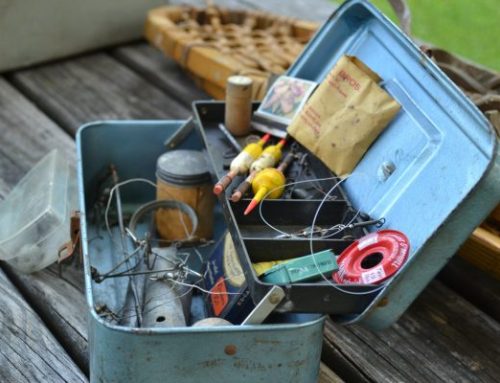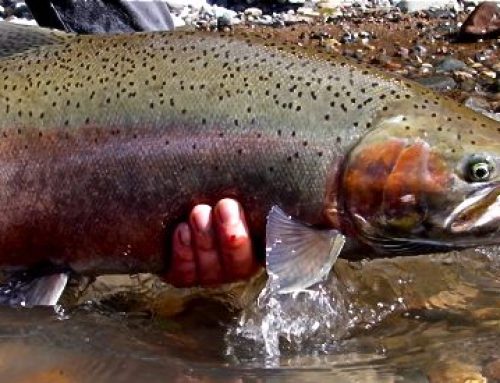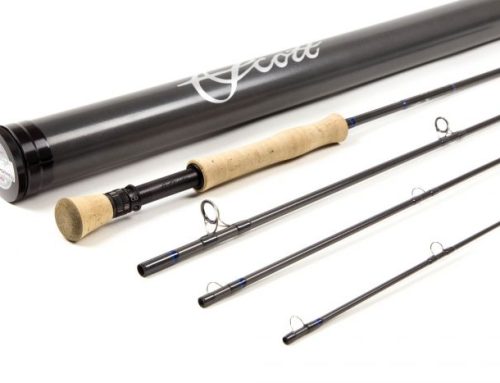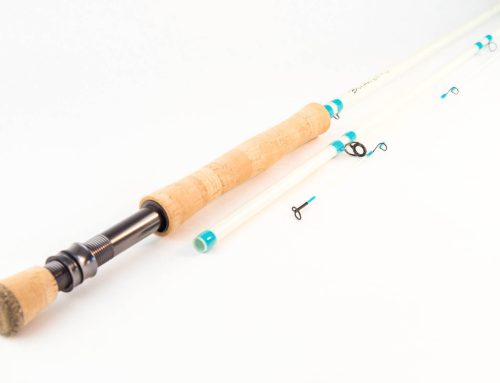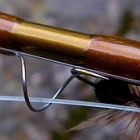
This review provided by: TroutUnderground.com
View Orvis Rods and More Products on Amazon!
Because I’m devilishly handsome, Orvis shipped me a 4-pc, 8.5′ 5wt “mid-flex” prototype of their yet-to-be-released ”Helios” fly rod — a rod said to be even lighter than their Zero Gravity series.
“How can it be lighter than Zero?” you ask? Well, despite consulting Albert Einstein on this one, we’re not sure, but I will testify that the rod is light. In fact, the box arrived, I hefted the tube, thought it was empty, and figured I was the victim of a practical joke played by Hathaway at Orvis.
Turns out the joke was on me. There was a rod in the tube — a prototype so new it lacked the Orvis name, the “Helios” label, and even the final cosmetics.
A call to Tom Rosenbauer at Orvis was oddly unproductive; manufacturers are usually keen to babble endlessly (to the point of nausea) about the technology behind their shiny new stuff, but Rosenbauer cagily told me to forget about the technology and just report my impressions.
Hmmm. The Mystery Pitch. Interesting.
First Impressions
Let’s just get this out of the way; I’m not easily bowled over by high-tech fly rod technology. One friend jokes that I’m a low modulus guy stuck in a high modulus fly fishing world, and there’s a ring of truth to that.
I fish a lot of bamboo and fiberglass, and own damned few graphite rods, which I often find stiff and lacking in the kind of feedback I want in a fly rod.
With this as a backdrop, my first lawn casts with the 8.5′ “mid-flex” Helios were a surprise; the rod cast smoothly at what you might call “normal trout ranges” and shockingly — I even felt a little flex under the cork grip at longer distances.
At short ranges, the rod lacked the kind of feel I get from my higher-mass bamboo and glass rods, but it was accurate and not overly stiff or clumsy.
Aerial mends were easy due to the light weight of the rod, though the higher line speeds generated by high-modulus rods give you less time to make the mends (compared to low modulus rods), so I’m calling this one a wash.
Overall — for a rod I would have told you was not interesting to me — I was pleasantly surprised.
Field Testing (or, It’s a Hard Life)
One reason why I’ve turned down some testing gigs is because I don’t want to spend my my precious fly fishing time field-testing equipment I don’t like.
I liked the Helios enough that I went ahead and float-tubed an alpine lake, fished a technical section of the Upper Sacramento River, and even hit some pocket water with Local Kung Fu Guide Wayne Eng, who fished the rod most of the evening.
From the float tube — hardly the ideal environment for a medium-flexing 8.5′ rod — I was able to cast for distance, and more importantly, do so accurately.
Popping a sinking line out of the water was no big deal (a task that’s not much fun with softer rods), and threading a damsel nymph between lily pads was a straightforward, no-hassle job.
The same held true on the technical water, where you sometimes have to make long casts, and you always have to make long roll casts.
My overall impression was of a very smooth fly rod — one that cast for distance without folding, yet fished well at shorter distances.
The Helios bore little resemblance to the “parking lot rods” that largely soured me on graphite, though it’s no match for my softer, low-modulus rods at short ranges.
Frankly, that’s to be expected; life is a series of tradeoffs, and the majority of fly rods nowadays seem tuned to cast just a bit further than is useful for most trout fishing.
Then again, they’re largely being sold to people who fish less then five times a year, so that distance bias helps sell rods.
Wayne Eng spent several hours with the rod fishing pocket water, and his face positively lit up. “Smooth” was the word he used over and over to describe the rod, and — sadly — he got to experience it with a couple of decent fish (I never caught anything bigger than 12″ on the Helios).
He said it was “very trouty” and because he has scads more experience with current rod technology, I’d suggest his word carries a little weight.
He gave it a thumbs up.
Tough Stuff
One Orvis staffer told me their exclusive thermoplastic resin technology actually placed them ahead of the competitors they’d lagged behind for so many years; they were able to build extremely light fly rods that weren’t brittle or fragile.
Time will be the judge of the truth of that statement, but I’ll say this – it certainly seems durable. Orvis is going to cringe when they read this, but twice I smacked the Helios very hard against solid, non-moving objects, and both times I was practicing the traditional “my Wonderdog broke your rod” excuses while examining the tip.
No breaks, no cracks, no excuses — not even after fishing the rod a couple times since.
That’s not exactly conclusive laboratory evidence, but it’s the kind of thing that allows a rod company to offer a long-term, no-questions warranty without breaking out in a rash.
The Beauty of High Modulus
Here I’ll make an embarrassing admission; on long casts, my tip (fly rod tip) tends to wander a bit, and low modulus materials often amplify that.
It’s one area where high modulus works well, and in this case, it was true. High modulus rods are also good nymph rods; they’re light — so highsticking all day doesn’t warp your shoulder — and they react very quickly for a more positive hookset.
Naturally, I can’t comment directly on those characteristics because I’m an effete dry fly fisher who rarely nymphs, but if you’re into lightweight rods for nymphing – a wholly quantifiable characteristic — then the break-resistant Helios is probably a worth a try.
The Rod
The Helios I fished was a prototype — and one of the few things I learned about the production models (which a little Woodward & Bernstein work tells me will be called “Zero Gravity Helios” rods) is the blanks will remain an attractive olive-colored blank but the wraps will be different — probably a deeper burgundy. [Update: Wrong. The blanks are dark colored in the final production models, and the reel seats are different from the photograph]
In the pursuit of lower overall rod weight, Orvis abandoned their attractive skeletonized reel seat from the Zero Gravity rods in favor of a seat with a graphite insert.
I liked the old one, but don’t have any significant problems with the new one, which hold reels tightly. It just doesn’t look as nice.
I will admit to disliking the 7″ Orvis cork grip, which most would call a “superfine” style.
It’s too long for a rod this length and weight, and even worse, I’m a total crank about grips, and believe the superfine and Western style grips that come with most modern graphite rods aren’t very comfortable over a long day of fishing.
In other words, the whole industry is wrong, and I’m right. (Just for context.)
Let’s chalk that up to a personal gripe, and hope that the rest of the world starts conforming to my singular view of the universe.
The Last Cast
Orvis is going to make a lot of noise about the feather-esque heft of their Zero Gravity Helios rods, and in a marketing-oriented universe, it makes perfect sense.
Still, I happily fish rods several ounces heavier than the 8.5′ Helios, so the durability and fishability of the of the Helios is a more useful concept to me than the weight.
Given my frequent rants against brittle fly rods — which can ruin a day, if not a trip — I’ve gotta believe Orvis is onto something here.
Still, the measure of any fly rod is how it fishes, and I was nicely surprised by the smoothness of the Helios, though it lacks the smooth, like buttah feedback of my heavier, low-modulus rods.
If I nymphed a lot I probably would own a rod like this, and if I was casting all day from a wind-besieged drift boat, I’d be damned happy I’d brought this thing along.
If I was a dealer, the whole package — the blank, the really nice tube, the cosmetics… they’d make me happy. It’s about time they started making graphite rods that didn’t look like military radio antennas.
By any account Orvis fell behind the “cutting edge” rod companies during the boom years of the 1990s and early 2000s, and their attempts to catch up weren’t always graceful.
It’s possible they’re now racing ahead of the pack, though the Sage, Winston and other partisans will no doubt have something to say about that.
Since this is the original Orvis Helios Rod and Orvis has come out with the Helios 2 and the Helios 3, view Orvis Rods and more products on Amazon!

